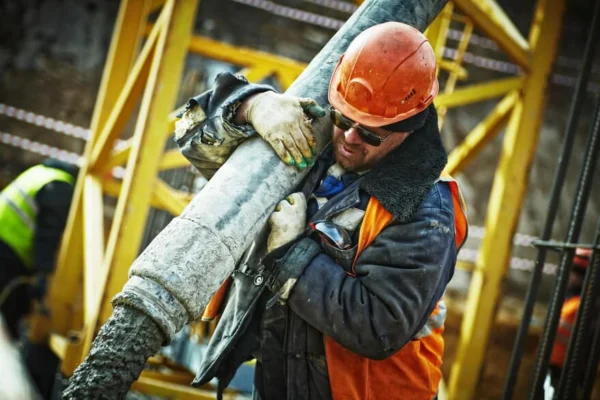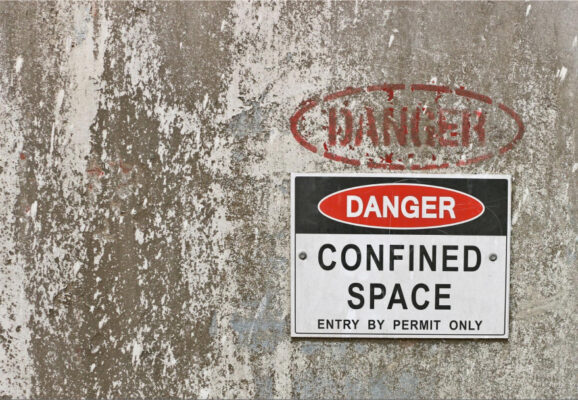
If you’re a site manager, field supervisor, or safety coordinator, you know one split-second decision can mean the difference between a safe workday and a serious incident. Physical hazards are the immediate threats that can turn routine operations into emergencies without warning.
Unlike long-term risks from prolonged exposure, physical hazards are threats that can cause serious injury, burns, or even death in an instant if not properly controlled.
Understanding a physical hazard is the first step to reducing risk. In this article, we’ll break down the five classes of hazards to look out for, share real industry examples, and give you practical strategies to help protect workers, prevent incidents, and strengthen your workplace safety program.
What is a Physical Hazard?
A physical hazard is any material, substance, or environmental condition on your job site that can cause immediate harm to your crew, damage equipment, or trigger a serious incident. These hazards are dangerous by nature; they don’t need to be mishandled to cause injury, tissue damage, or worse.
Unlike ergonomic hazards that cause problems over time, like a sore back from improper lifting, physical hazards strike fast. These include gas cylinders rupturing under pressure, a chemical fire igniting near hot surfaces, or an electrical arc injuring a worker. It’s the stuff that can explode, catch fire, or cause an electric shock in the blink of an eye.
That’s why it’s not enough to hope your crew knows what to avoid. You’ve got to spot the risks early, have the right gear ready, and make sure everyone knows how to deal with the danger before it turns into a full-blown emergency.
What are the 5 Main Classes of Physical Hazards?
Physical hazards are classified into five main classes based on how they harm your crew and damage your operation. Each class presents unique risks that require specific safety protocols and emergency response procedures.

1. Explosive Materials
Explosive substances violently release energy, sending out shockwaves, intense heat, and dangerous debris in an instant. Even a slight misstep with these materials on a worksite can turn a routine task into a disaster scene in seconds.
Common explosive hazards on industrial sites include:
- Ammonium nitrate – Becomes extremely dangerous when contaminated with fuel or organic materials
- Dynamite and blasting agents – Can detonate from impact, friction, or heat if not stored properly
- Acetylene cylinders – Can explode if overheated, damaged, or stored horizontally
- Fireworks and pyrotechnics – Unstable when old or damaged, can detonate unexpectedly
Prevention Tip: Store securely, away from extreme heat conditions. Follow strict handling procedures.
2. Gas Under Pressure
Pressurized gas containers can harm your crew in two main ways: the container itself can explode and turn into a flying missile, and the gas inside can be toxic, catch fire, or suffocate workers by displacing oxygen.
Pressurized gas hazards your crew may encounter include:
- Compressed air systems – Lines can rupture without warning, causing severe injuries or cuts
- Oxygen cylinders – Create extreme fire hazards, by making everything burn faster and hotter
- Propane tanks – Can become flying missiles if valves fail, and may create massive fireballs
- CO2 cartridges and cylinders – Displace oxygen rapidly, and can cause suffocation in enclosed spaces
Prevention Tip: Store upright, inspect regularly, and ensure proper ventilation.
3. Flammable Materials
Flammable materials catch fire easily and burn fast, turning a small ignition source into a full-blown worksite emergency. With low flash points, these substances can ignite at temperatures commonly found in industrial settings.
Flammable hazards present on most worksites include:
- Gasoline and diesel fuel – Create invisible vapour clouds that can travel far from spill sites
- Solvents and cleaning chemicals – Vapours build up in confined spaces and can explode from tiny sparks
- Welding gases (acetylene, propane) – Form explosive mixtures with air in the right concentrations
- Paint and coating materials – Release flammable vapours during application and while drying
Prevention Tip: Control ignition sources, follow hot work protocols, and store flammables properly.
4. Corrosive Materials
Corrosive substances can burn skin, eyes, respiratory tissue, metal, and equipment within seconds of contact. These materials pose serious injury risks to your crew and can weaken tools, PPE, and structural components over time, leading to hidden dangers and costly failures.
Corrosive materials commonly found on industrial sites include:
- Hydrochloric acid – Causes severe burns on contact and releases toxic chlorine gas
- Sodium hydroxide (caustic soda) – Can cause permanent blindness and burns through skin to bone
- Battery acid (sulfuric acid) – Eats through skin and metal rapidly, and generates heat when mixed with water
- Concrete and cement mixtures – Causes chemical burns that worsen the longer they stay on the skin
Prevention Tip: Use PPE, label containers clearly, and clean spills immediately.
5. Oxidizing Agents
Oxidizing agents don’t burn on their own, but they feed fires by supplying oxygen to nearby combustible materials. That means even a minor spark can become a full-blown blaze when oxidizers are present. These substances generate extreme heat and flame, spreading fires faster and burning hotter. This is especially dangerous in industrial environments where flammables are already in use.
Oxidizing hazards your crew may work with include:
- Hydrogen peroxide (concentrated solutions) – Can explode when concentrated or contaminated with organic materials
- Chlorine bleach and hypochlorites – Produces deadly chlorine gas when mixed with acids or ammonia
- Potassium permanganate – Ignites organic materials on contact, can cause spontaneous combustion
- Compressed oxygen – Makes clothing and equipment highly flammable, increases fire spread dramatically
Prevention Tip: Store separately from flammables and avoid contamination.
Practical Tips to Prevent Physical Hazards on the Job

Managing physical hazards starts with having the right systems in place before your crew encounters these materials. Here are some essential steps every site manager should implement:
Know What’s on Your Site
Keep an updated inventory of all hazardous materials on your worksite. This means knowing exactly where explosives, pressurized containers, flammable liquids, corrosives, and oxidizers are stored and used. This information helps you plan safer operations near these materials and respond quickly to emergencies.
Pro Tip: Always pay special attention to explosive materials on your site. Even small amounts of ammonium nitrate can become dangerous if fuel or organic materials are contaminated.
Train Your Crew on the Real Dangers
Don’t just teach your crew the procedures, show them what happens when they’re ignored. Walk your crew through real incidents from your industry. When they see photos of chemical burns or hear about an explosion that shut down a job site like theirs, they will take safety seriously instead of treating it like paperwork.
Pro Tip: Make sure they understand that corrosive materials like caustic soda can cause permanent blindness and burn through skin to the bone.
Start Every Shift with a Safety Check
Make equipment and safety checks part of every startup routine. Have your crew look for dents in gas cylinders, rust on chemical tanks, leaks around valves, and cracks in pressure lines. Catching these issues early keeps people safe and the job moving.
Pro Tip: Don’t forget that acids will eat through their own containers over time; what looks solid today might fail next week.
Control Ignition Sources
Don’t let your crews work with fire and flammable materials in the same area. Designate specific zones for welding and hot work and keep them away from fuel storage and chemical areas. Ensure your electricians check connections regularly, and don’t let anyone start grinding or welding without a proper work permit signed off on.
Pro Tip: Remember, flammable materials like gasoline and solvents create invisible vapour clouds that can travel far from the source and ignite from the slightest spark.
Ensure Proper Storage and Separation
Store incompatible materials separately. Keep oxidizers away from flammable materials, store compressed gases in upright positions with proper securing, and maintain proper ventilation in storage areas. Bad storage practices lead to serious incidents that could have been prevented.
Pro Tip: Always store oxidizing materials like hydrogen peroxide and chlorine bleach far apart, as they make flammable materials burn faster and hotter.
Have Emergency Response Plans Ready
Plan for when things go wrong before they happen. Ensure your crew knows exactly how to evacuate and where to meet up. Post emergency numbers where everyone can see them, check that eyewash stations and fire equipment are working, and establish a clear chain of command for who calls the shots when an incident occurs.
Pro Tip: If you have pressurized gas systems on site, your emergency plan needs to account for potential explosive failures that can turn containers into deadly projectiles.
Use the Right PPE for Each Hazard
Don’t let your crew use the wrong protection for the job. Stock chemical-resistant gear for anyone working with acids, ensure respiratory equipment is available for gas exposure, and require fire-resistant clothing around flammable materials. Check that your workers know which PPE to grab for different tasks; having the gear doesn’t help if they use it incorrectly.
Pro Tip: Remember that gases under pressure can displace oxygen or contain toxic substances, so proper respiratory protection is critical when working around pressurized systems.
Bring in Experts to Tackle Physical Hazards Head-On
When you’re dealing with complex physical hazards, having specialized support can make all the difference. Whether you’re managing daily operations with H2S exposure risks, coordinating work around multiple hazardous materials, or needing specialized crew training, working with experienced health and safety professionals can prevent incidents that shut down operations.
At Trojan Safety, we’ve spent three decades helping site managers across Western Canada handle physical hazards safely. We understand the specific challenges in the oil and gas, mining, forestry, and construction industries.
Here’s how Trojan Safety helps industrial job sites manage physical hazards:
- H2S Safety Services – We provide on-site safety specialists, gas detection equipment, and emergency response teams for sites where hydrogen sulphide is a concern.
- Air Quality Monitoring – Our mobile monitoring units track dangerous gas concentrations in real-time, especially critical around flammable and toxic materials.
- Industrial Fire Services – We supply trained firefighters and emergency equipment for high-risk operations involving explosives, flammables, and oxidizing materials.
- Physical Hazard Training Courses – Our Detection and Control of Flammable Substances training and other specialized courses prepare your crew to handle physical hazards safely.
The bottom line is that physical hazards don’t give second chances. Having the right expertise on your team can mean the difference between a controlled situation and a significant incident.
Contact us today to learn how we can help make your operations safer while keeping your crew protected and your project on schedule.

 Written By: Jeff Kirschner, General Manager
Written By: Jeff Kirschner, General Manager

